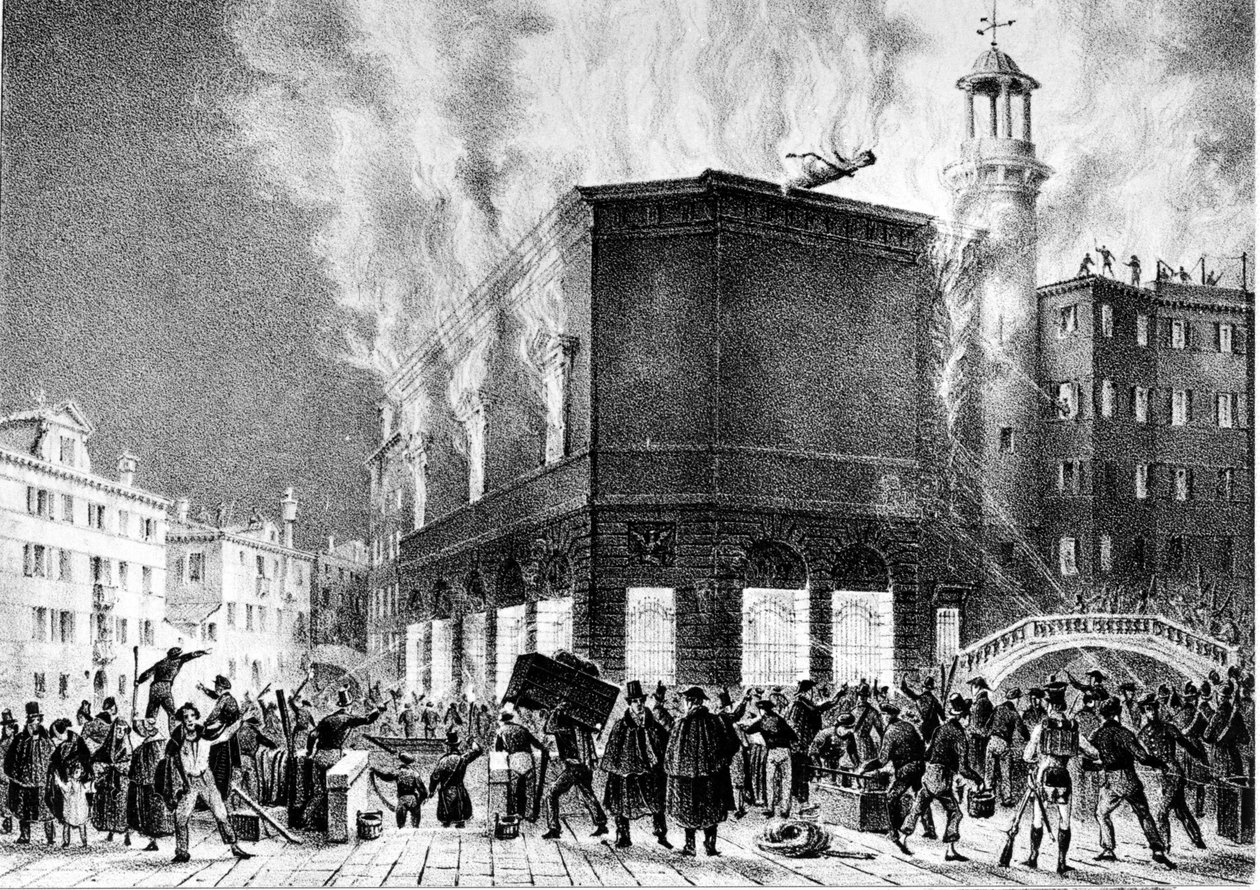Since its opening in 1792, this legendary opera house has risen—literally—from the ashes three times.
Each rebirth has been more spectacular than the last. Let’s unfold its fiery saga.
1. The First Flame: 1836 Inferno
Just 44 years after its grand debut, La Fenice caught fire on December 13, 1836,
during a masked ball. Sparks from stage lighting ignited draperies; within hours,
the auditorium and royal boxes were engulfed.
Remarkably, work began immediately. By December 1837, a redesigned theater
by architect Pietro Bojardi reopened—an early testament to Venice’s resilience.
2. The 1996 Blaze and a Nation Mourns
On January 29, 1996, another disastrous fire struck—this time traced to arson.
Flames demolished the stage, orchestra pit, and auditorium. Public outcry
echoed across Italy; La Fenice’s nickname, the Phoenix, seemed cruelly ironic.
A massive fundraising effort followed. Italian cultural authorities
pledged €90 million, and skilled artisans poured in from across Europe.
3. Rebirth in Full Splendor: 2003 Reopening
On December 14, 2003, La Fenice rose again—this time with a painstakingly
reconstructed neoclassical interior. Architects used original plans,
repurposed salvaged materials, and even recast the gilded stuccoes.
The inaugural performance: Verdi’s La Traviata, returning a home to the composer who
famously premiered many works here. Visitors marveled at the blend of heritage
craftsmanship and modern safety features.
4. Legacy of the Phoenix
Today, Teatro La Fenice stands as Venice’s cultural heartbeat. Its storied past
attracts opera lovers and history buffs alike. Guided tours (official site)
reveal hidden chambers once reserved for nobles, the trapdoor used by couriers,
and the stage machinery rebuilt for safety after 2003.
La Fenice’s repeated rebirths underscore a powerful truth: even in ruin, true art endures.
Next time you wander the canal-lined streets, pause at its glowing facade and
remember—this Phoenix refuses to stay down.
Planning a broader Italy itinerary? Don’t miss our guide to
5 Best Hiking Trails in the Alps.
Final Thought
Each blaze at La Fenice became a catalyst for reinvention. Venice taught us that legacy
isn’t about avoiding the flames—it’s about rising, again and again, with fresh brilliance.



